Table of Contents
Physics Lab Equipment are an integral part when it comes to studying Physics practically. In this article, we will discuss essential Physics lab equipment and their uses. But before that, let us know what we mean by Physics?
“Physics is a natural science that involves the study of matter and its motion through spacetime, along with related concepts such as energy and force.”
It’s concerned with studying all forms of matter, radiation, interactions between matter and energy, their effects on one another—physics studies how physical objects interact through space and time. More broadly, it is the general analysis of nature conducted to understand how the universe behaves.
What are Physics Lab Equipment?
Now let us know briefly about Physics Lab Equipment here:
Physics Lab Equipment aims to perform experiments related to physics, specifically those dealing with physical properties and characteristics of matter. Physics Lab Equipment are special-purpose tools used in the performance of experiments.
These tools include many different instruments that help students conduct experiments and observe how other physical processes work. The lab consists of measuring duration, distance, force, mass, temperature, and time.
List of Essential Physics Lab Equipment:
Now that you know the importance of Physics laboratory equipment, it is best to learn more about its uses. Here are some of the valuable physics lab equipment names that are must for a physics lab:
- Magnetism Lab
- Solar Energy Trainer
- Fuel Cell Trainer
- Wind Energy Trainer
- Electrostatics Lab Trainer
- Introductory Nano Kit
- Newton’s Ring Apparatus
- LED Light Trainer
- Magnetic Field Measurement Apparatus
- Vibrating Sample Magnetometer
- E/M Experiment based on Thompson Method
- Frank Hertz Experiment
- X-Ray Diffraction Simulation Experiment
- Frequency Dependence of Dielectric Constant
- Dielectric Constant of Liquids
- Zeeman Effect Experiment
1. Magnetism Lab:
Magnetism is one of the four fundamental interactions of nature. Magnetism lab is a training tool for Laboratories that is useful in understanding the fundamentals of magnetism. It is an ideal platform to enhance students’ and professionals’ education, training, skills & development.
It provides the necessary tools for improving your knowledge of magnetism. It can help create experiments, study the behaviour of various substances under different magnetic fields and even build electromagnets.
2. Solar Energy Trainer:
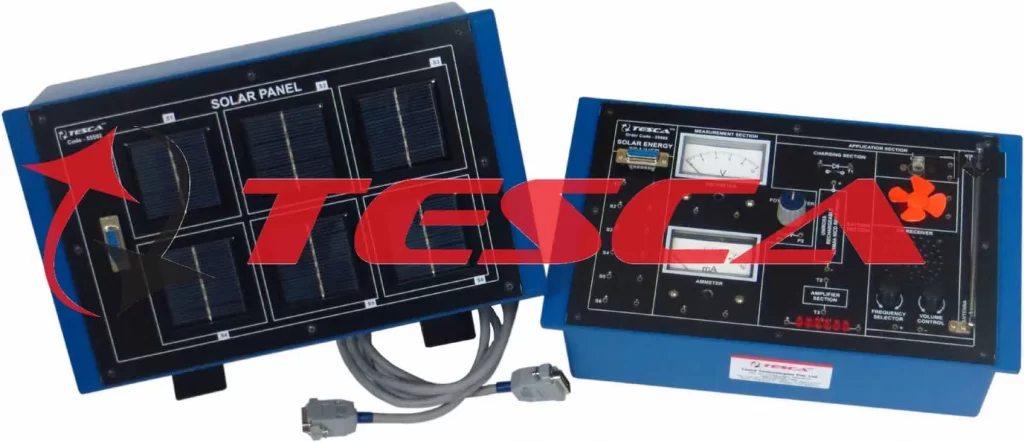
A Solar Energy Trainer is a device that is useful in training people on how solar energy works. It is a training program that provides information regarding studying the application and characteristics of solar energy. It includes the complete process of solar energy conversion-from incident sunlight through various stages of energy conversion. It also offers information about charging the battery using solar energy.
The Solar Energy trainer deals with the conversion of the photons of the sun into electric energy. The whole process monitors with the help of an ammeter and voltmeter that measures the production of current and voltage.
3. Fuel Cell Trainer:
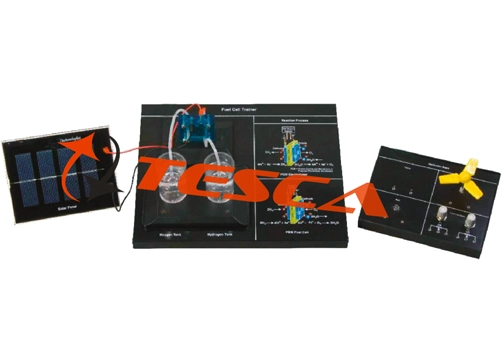
Before we mention the fuel cell trainer, we should understand what a fuel cell is?
A fuel cell helps produce electricity by using the chemical energy of Hydrogen and other fuels.
The Fuel Cell Trainer is a type of experimental system that works on renewing power generation. It uses the element Hydrogen as a medium of renewable energy. It then powers applications. The fuel cell trainer contains fuel cell and electrolysis that we can use to study the renewable energy it can harness, reuse, and store.
A Fuel Cell Trainer has the Oxygen, storage tanks and Hydrogen along with the reversible fuel cells. It also contains an application board and solar panels.
With the help of this trainer, you can study the mechanism of the solar-hydrogen-cycle from the solar panel.
Know more about Power Electronics Training System
4. Wind Energy Trainer:
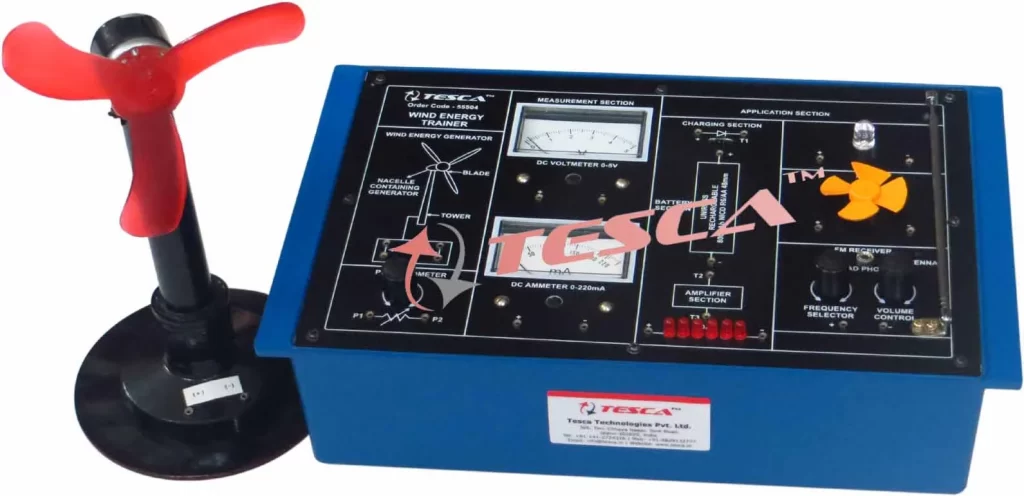
Before we talk about the Wind Energy Trainers, let us know about Wind Energy.
Wind energy refers to the kinetic energy of air in motion. It is a renewable resource harnessed through wind turbines. The most common feature of this type of turbine is internal generators to produce electricity and its function as an instructional tool.
The wind energy trainer is a wind turbine model used to teach, test, research, and develop wind turbine technology. It is a piece of lab equipment that helps the students understand the working of wind energy conversion systems and helps them study how to convert wind force into mechanical or electrical power.
Also read: Pneumatic Trainer Kit to measure fluid power.
5. Electrostatics Lab Trainer:
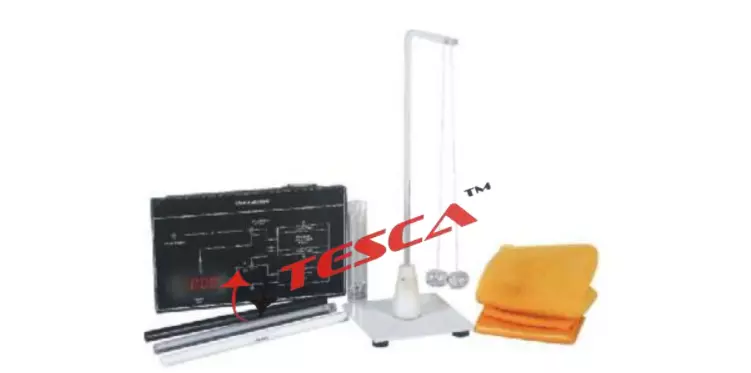
Adding to the physics lab equipment names, the Electrostatics Physics Lab Trainer is another worth mentioning lab trainer. Electrostatics is the study of electric charge on objects and how it behaves when brought close to other charged things. Electrostatic Lab Trainer is a platform that enables students to learn about electrostatics and build real-life applications. It helps to know the basic concepts of electrostatics by creating various experiments. It simulates an electrostatic field around a charged object, which helps solve different kinds of problems.
6. Introductory Nano Kit:
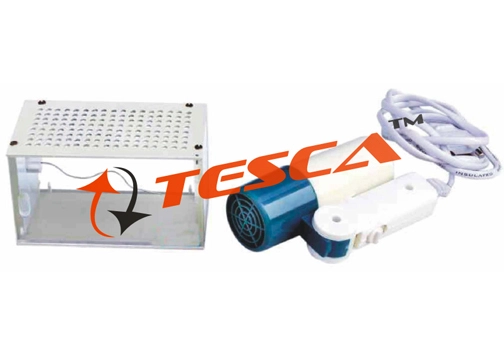
Before we talk about the nanotechnology kit, we should understand what do you mean by nanotechnology. Nanotechnology is a type of technology that controls and manipulates the substance at a nanometer level. It deals with the study of the structures between 1 NM to 100 NM. A Nano Kit contains all the necessary tools required to perform experiments in a high-school or college lab. It defines nanotechnology concepts. Nano Kit is a collection of lab equipment and instruments dealing with micro-electronics, nanotechnology, semiconductor’s manufacturing, and many more.
7. Newton’s Ring Apparatus:
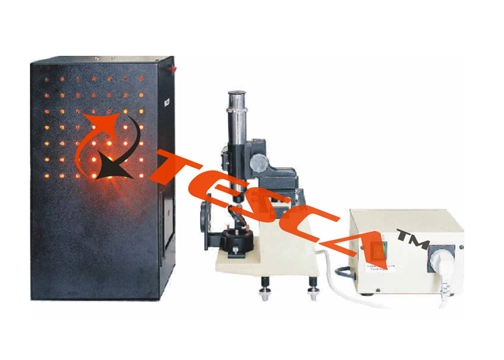
Another worthy mention in the physics lab apparatus list is Newton’s Ring Apparatus. Before we deal with the Newton’s Rings Apparatus, let us know about Newton’s Ring. A Newton’s ring is an optical phenomenon that manifests itself as a series of concentric coloured rings superimposed on the surface of transparent objects.
The rings form due to the Interference of light waves originating from different parts of the thing.
Light reflected from two surfaces inside the ring combine to form coloured bands caused by Interference. Newton’s Rings Apparatus helps demonstrate the principle of Interference of light waves. It consists of a large flat glass plate polished on both sides and placed in water. Two vertical standers support the apparatus in such a way that it can rotate freely.
8. LED Light Trainer:
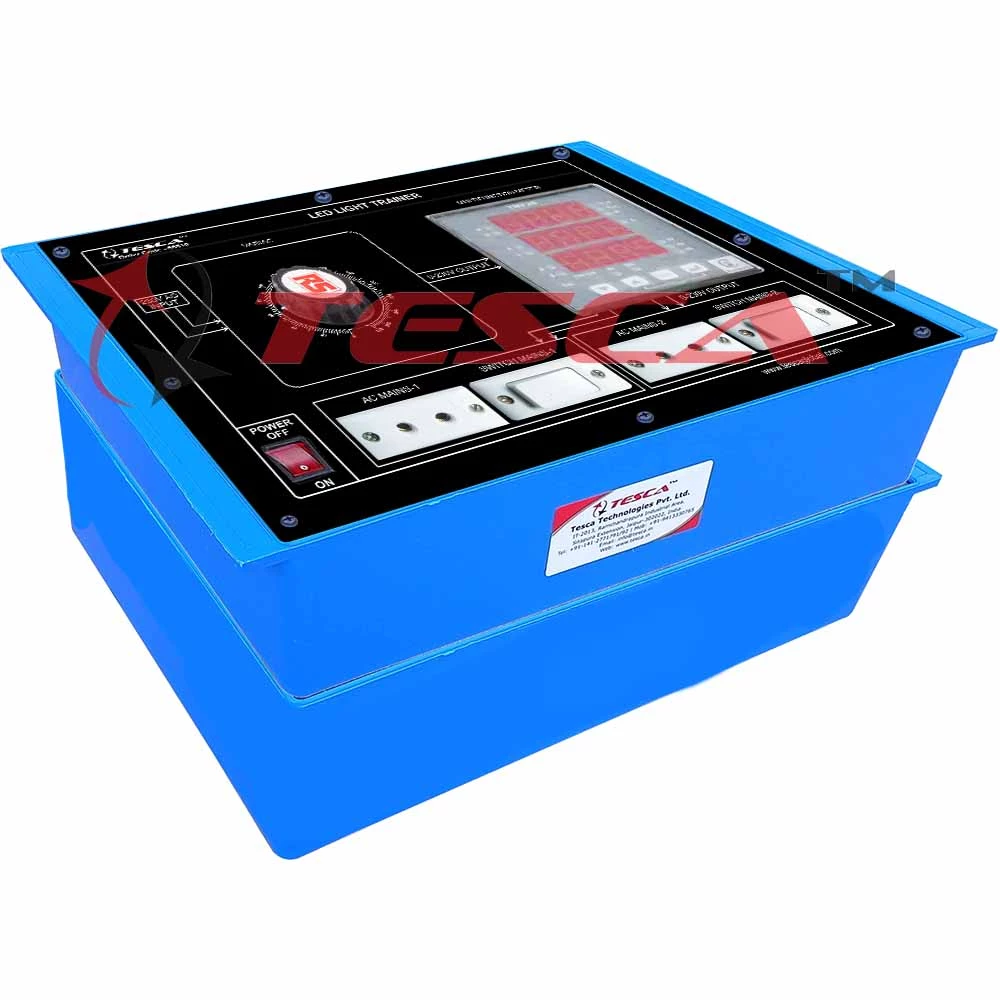
A LED Lighting Trainer is a testing system or device that simulates the response of a LED light in various lighting conditions. It’s like a simulator for automotive and train drivers to provide hands-on practice and prepare for actual driving. It is a tool that is useful for training technicians for LED lighting testing.
9. Magnetic Field Measurement Apparatus:
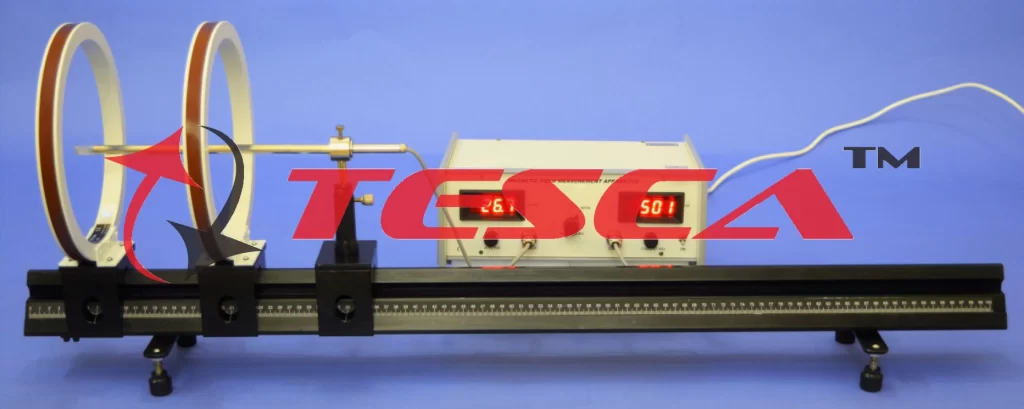
A magnetic field measurement apparatus consists of two types of coils: Gaussmeter and Constant Current Power Supply.
It measures both types of static as well as altering magnetic fields. It helps study the magnetic field reference to the calculation of its diameter and a coil. It also helps analyze the principle of superimposition of the magnetic field that causes due to the two coins by making training a distance between both.
A Gauss meter is a helpful device in measuring the existing magnetic field. The device probe mounts on the rail with the help of a scale. It can move smoothly to measure the magnetic field along with the axis of the coil.
10. Vibrating Sample Magnetometer:
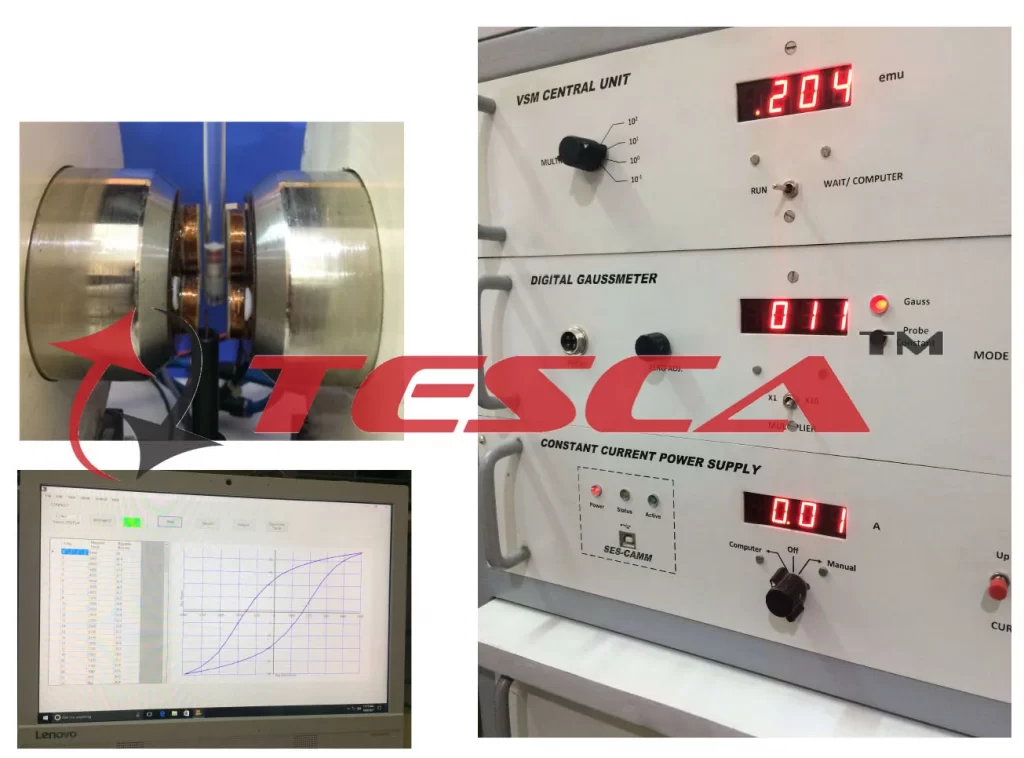
It is an instrument helpful in measuring the magnetic property based on the Law of Induction given by Faraday. The tool determines the magnetic properties of various materials. It determines materials such as ferromagnetic, paramagnetic, diamagnetic, and antiferromagnetic.
A Vibrating Sample Magnetometer uses a superconducting quantum interference device (SQUID) to measure the magnetic field, such as a single molecule. In addition to measuring the magnetic field of moving objects, SQUIDs can also detect tiny fluctuations in magnetic fields from stationary objects.
It is essential in mineral exploration, geophysical investigations, and engineering applications.
Some of the Lab tools that we can find based on the experiments are:
11. E/M Experiment based on Thompson Method:
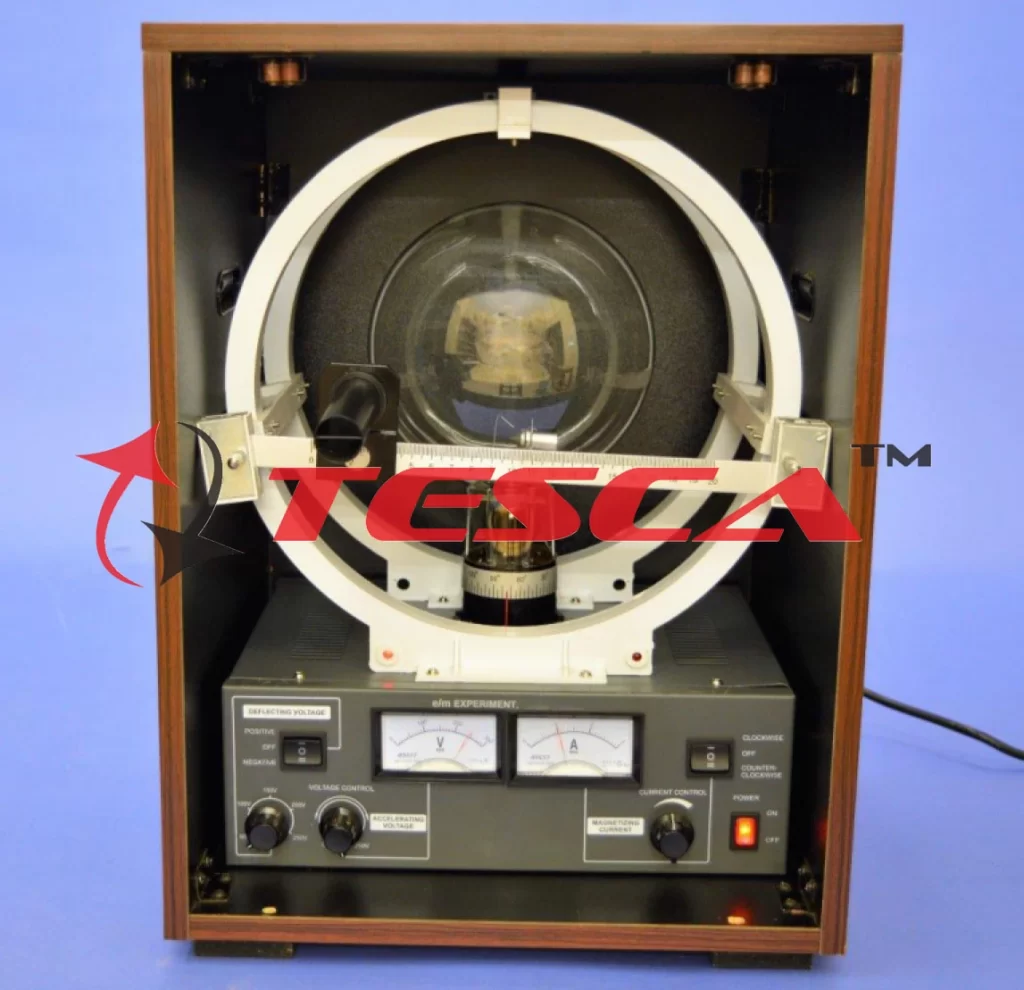
The E/M experiment based on the Thompson method helps determine the surface resistance of metals. This method requires the use of two flat parallel electrodes of identical dimensions.
It is primarily helpful for measuring the surface resistivity of metals at different specific potentials while using different values of current density. It is a series of experiments to find the relation between the value of emf, an electromotive force produced by a galvanic cell in which it is operating. The principle of this experiment is that a beam of electrons experiences forces if the magnetic field and electric fields control it.
12. Frank Hertz Experiment:
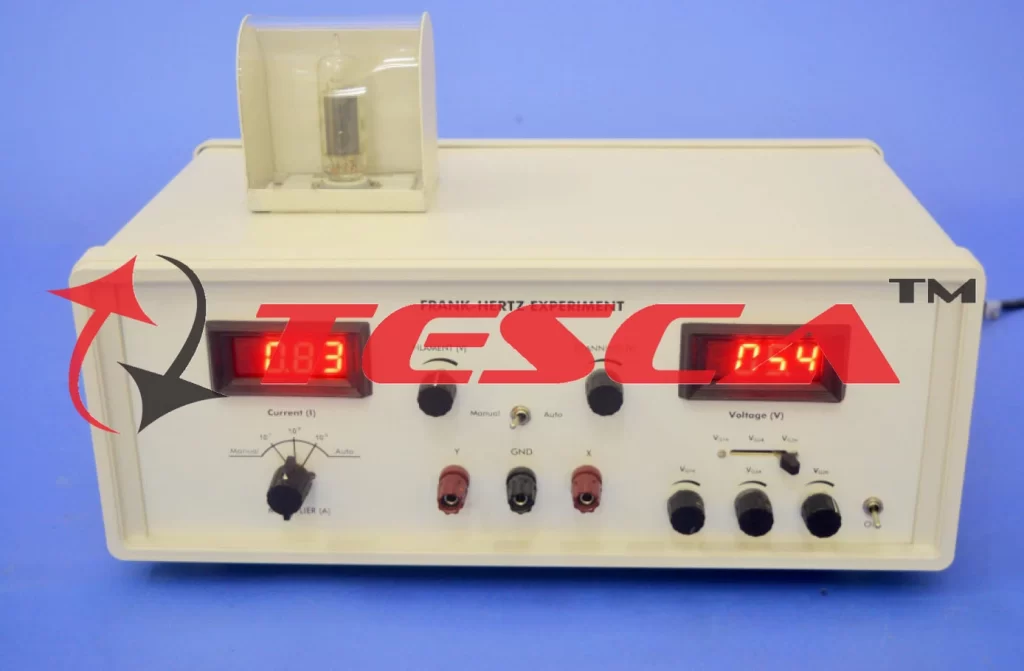
The Franck- Hertz experiment issues the quantum nature of atoms and is known as the first electrical measurement to do so. The experiment aimed to show that electromagnetic waves generate electric oscillations.
In this experiment, electrons accelerate with the help of a voltage towards a positively charged grid. It takes place in a glass envelope filled with the vapour of Mercury.
Near it, we find the collection plate at a slightly negative voltage concerning the grid. As the acceleration of voltage increases, the current drops and gives some value. At the end of the experiment, it measures the energy necessary to force an electron to reach an excited state. It is scientific proof of the existence of electromagnetic waves.
13. X-Ray Diffraction Simulation Experiment:
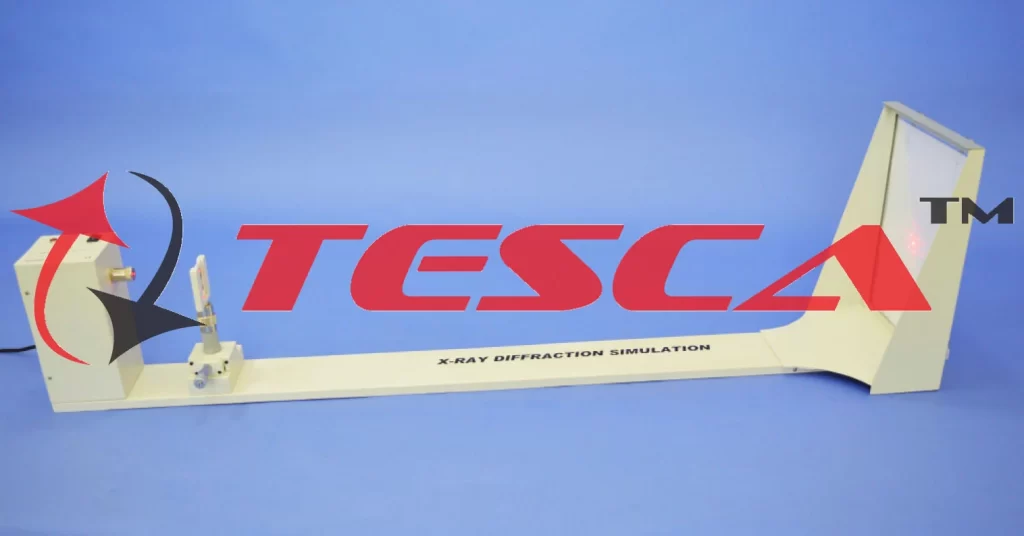
X-ray diffraction (XRD) is a well-known technique to determine the crystalline structure of materials. The experiment simulates an XRD measurement using a coherent beam of electrons and compares the results with an accurate height with x-rays.
The significance of the diffraction experiment that involves x-ray electron and neutron is that it helps unravel the relative atomic positions of a solid material. It is essential to know the basic information regarding the bond between atomic distance and angle to understand the chemical and physical properties of the material.
It is a fundamental technique used in materials science, structural biology, and many others. This simulator helps us to understand the basics of how diffraction happens.
14. Frequency Dependence of Dielectric Constant:
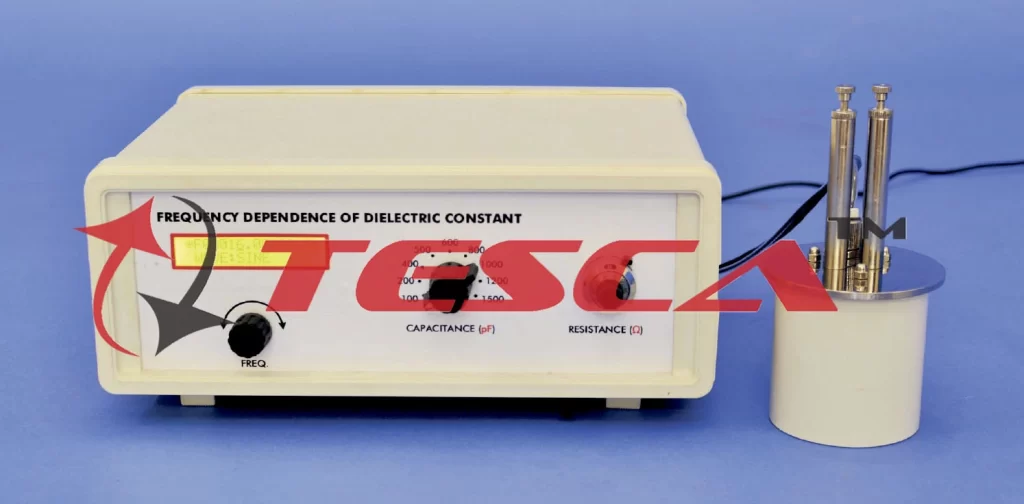
As per the Frequency Dependence of Dielectric Constant, the frequency increases by dropping the net polarisation of the materials. It is a polarization mechanism, then it expands to contribute, and it results in the constant dropping of the Dielectric. Materials that have permanent dipoles have a significant variation of the dielectric constant with temperature.
The reason behind this is the effect of the heat on the polarization. The dielectric constant depends on factors such as moisture content, temperature, and frequency, and it decreases with the increase of the frequency.
When it comes to the decreasing part of the dielectric constant, it happens because of the frequency increase. The reason behind the decreasing of the electric constant is the production of the space charge polarization effect. After it, the dielectric constant remains the same but increases with the increase of temperature.
15. Dielectric Constant of Liquids:
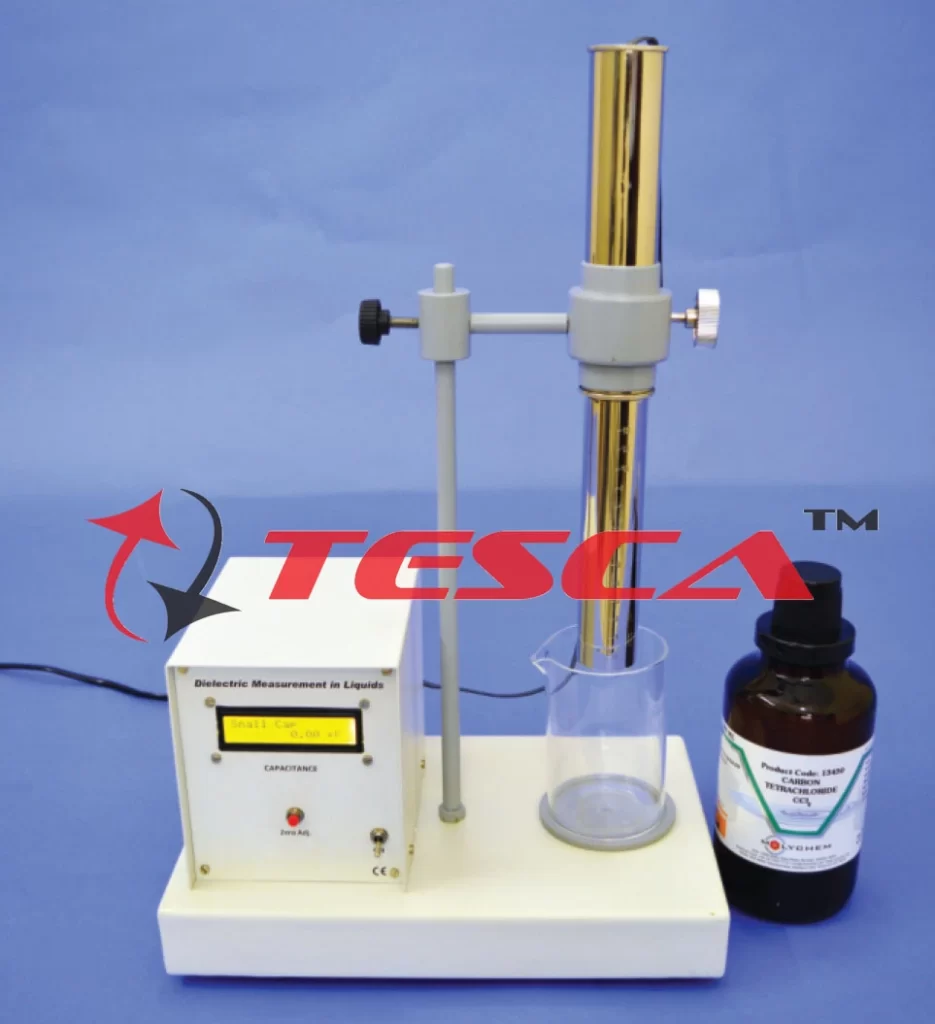
The Dielectric Constant is used to characterize the dissipation of electric charges in a given medium. It is also known as relative permittivity and relative permeability. It also describes how well an insulator can store energy in the form of an electrostatic field.
When we talk about the Dielectric constant of liquids, then is the ratio of the absolute value of the dielectric permittivity. It is a dimensionless quantity and has no units.
We can determine the dielectric constant of liquids by filling the capacitor with air and comparing the capacitance value when the Dielectric is in place of its value.
16. Zeeman Effect Experiment:
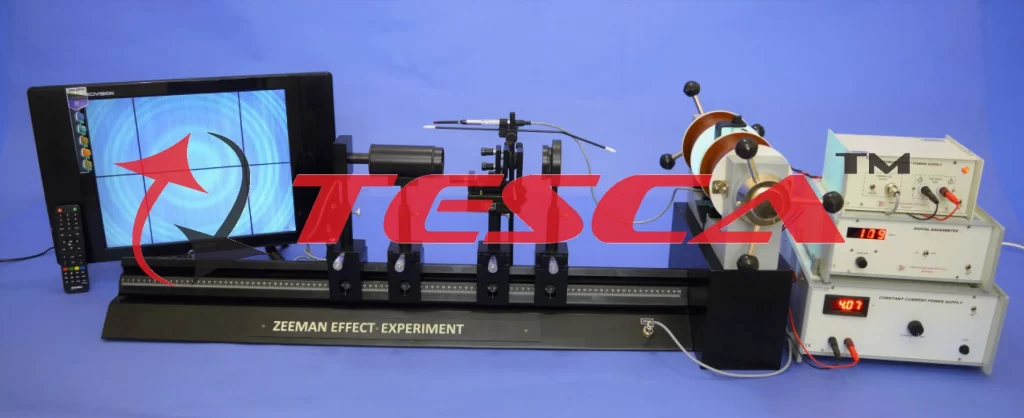
The Zeeman Effect Experiment is about an effect that appears when a spectral line splits into two different frequencies when the light enters a magnetic field. It is about how the magnetic field changes the behaviour of light.
It helps analyze the spectral and quantification of magnetic field strength. The gap between the sections of field power is proportional to that of the spectral line. It helps find out the magnetic field when it cannot quantify anymore.
The Zeeman effect verifies the energy level of atoms by categorizing the spin and mass. It also evaluates the electron paramagnetic resonance, atomic particle and nuclear Magnetic resonance spectroscopy.
Now that you have gone through the physics lab apparatus list, you probably wonder where you can find out the best physics lab equipment manufacturer. Several suppliers and manufacturers offer laboratory equipment. Most of the lab equipment is available on the official site of Tesca Global.
But when it comes to providing high-quality and precision laboratory equipment, Tesca Global is a leading manufacturer. Moreover, Tesca provides Lab equipment and tools at affordable rates. If you are looking for high-quality physics lab equipment for your lab, Tesca Global can help you.
FAQs:
Who is the best manufacturer of mechanical engineering laboratory equipment in India?
Tesca Global is the best manufacturer of Mechanical Engineering Lab Equipments. It has established itself as a reliable supplier of quality products for laboratory use in India and abroad. The company provides high-quality machines and instruments for various industries and offers a wide range of products.
Where can I buy reasonably priced lab equipment and apparatuses?
You can buy reasonably priced lab equipment and apparatuses from Tesca Global as they offer extensive testing machines with high-end features at competitive prices.



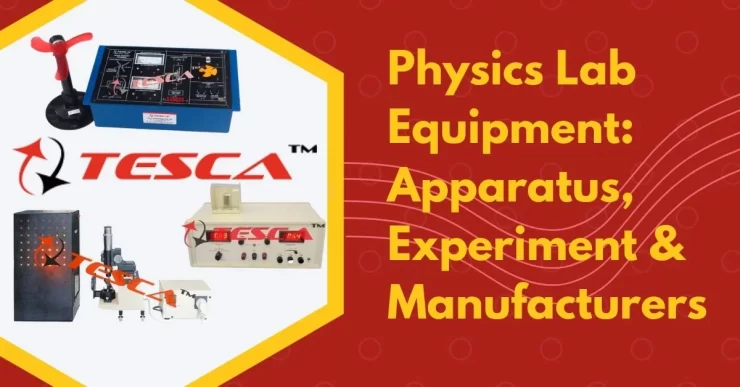

We want to purchase laboratory equipment for our teaching laboratory in Hazara University Mansehra for department of Physics.
For that we need your guidance and information.